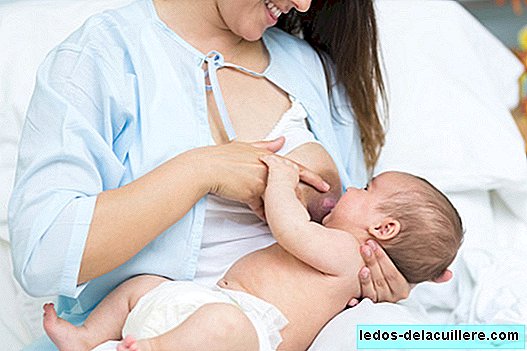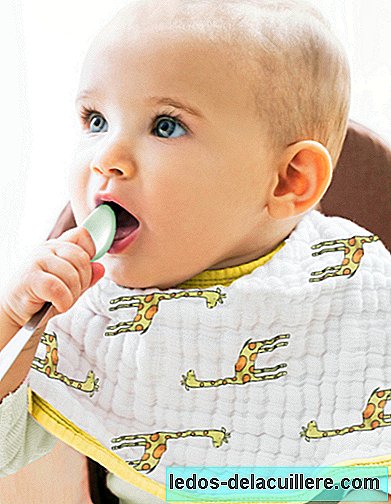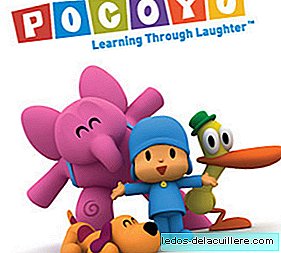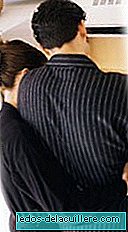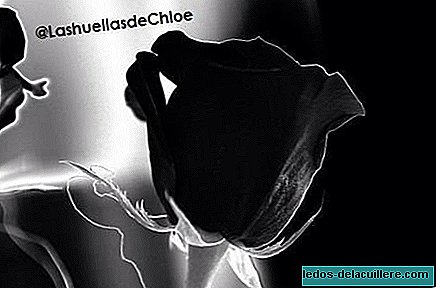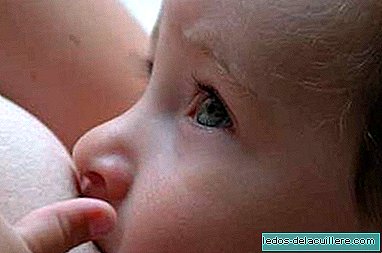
As we have said on other occasions, All breasts are suitable for breastfeeding a baby, even if the nipples are flat or inverted.
Many women give up breastfeeding because they believe they will not be able to breastfeed their babies, but with certainty and some advice to put into practice you can feed them without problem.
Let's start by explaining the difference between flat nipples and inverted nipples. By squeezing the areola between the index fingers and thumb the normal nipple protrudes. When the nipple does not protrude from the areola, it is said to be flat, but when it seems to retract further backward as if it were a navel it is said to be inverted.
Flat and inverted nipples have shorter ligaments than normal ones, making them instead of projecting outwardly sunk. This makes it difficult for the baby to hold on tightly to the nipple, causing the onset of breastfeeding to be problematic but does not prevent breastfeeding.
It does not prevent it because contrary to what one might believe, a nipple is not needed to breastfeed. There are the holes through which the milk comes out, but the nipple may come out if the baby "milks" the breast covering a large part of the areola with his mouth.
Flat nipples are usually corrected with the baby's own suction to feed while really inverted nipples never bulge, that is, they never come out. With both you can breastfeed, but sometimes breastfeeding can be painful because sucking the baby creates wounds on the skin of the nipples forming cracks.
After delivery, it is advisable that women with flat or inverted nipples look for the support of a specialist to start breastfeeding.
Some gadgets are sold in specialized stores such as teat cups or gadgets to use before delivery that thanks to a continuous vacuum mechanism stimulate the nipple to take it out. But they have their drawbacks.
First, they would work only in the case of flat nipples (the really inverted nipples do not bulge). Second, because although there will be those who have worked very well, they could cause blockages in the breast ducts and stimulating the nipple could lead to increased production of oxytocin, the hormone that triggers labor.
Once the baby is born, depending on the degree of hudimiento, sometimes it is the baby himself who sucks up by correcting the nipple by pulling it out. Otherwise, the nipples should be stimulated before the shot to get the nipple out.
If the nipple does not come out with the baby's own suction there is three things to use after delivery that can help you:
1) You can use the syringe technique. It is a syringe (one of a lifetime) but modified in a homemade way. The upper part of the syringe (where the needle goes) is cut and the plunger is turned, changing direction, that is, introducing it by the part you have cut. Placing the back of the syringe on the nipple and sliding the plunger outward exerts a pressure that helps remove the nipple.
2) You can also use a breast pump that shape the nipple just before the shot.
3) Finally, if the baby does not hold the nipple in any way you can try a liner as thin as possible. There are ultrafine silicone. If you use a teat cup and it works well it is not necessary to remove it. Between 2 and 5 months, babies only remove their lids without doing anything.
On the other hand, there are other things that can help you when breastfeeding, such as:
Starting breastfeeding within the first two hours of life is very important in any case, but it is especially recommended in cases of flat or inverted nipples since the instinct of the baby's sucking is more active.
If the problematic nipple is only one, start taking it through that breast since the baby's sucking is stronger at the beginning.
Try different postures to find the one with which the baby clings best to the chest.
Remember that if you want to breastfeed your baby can do it even if you have flat or inverted nipples.
For any questions you can consult with a support group or a professional specialized in breastfeeding. By the way, I want to publicly thank the lactation consultant who guided me to write this article.


